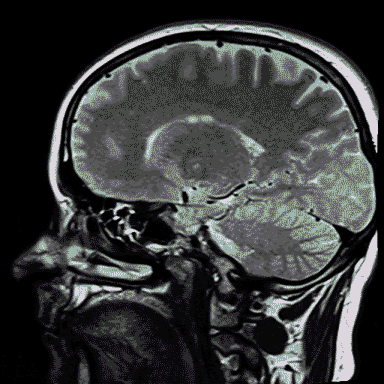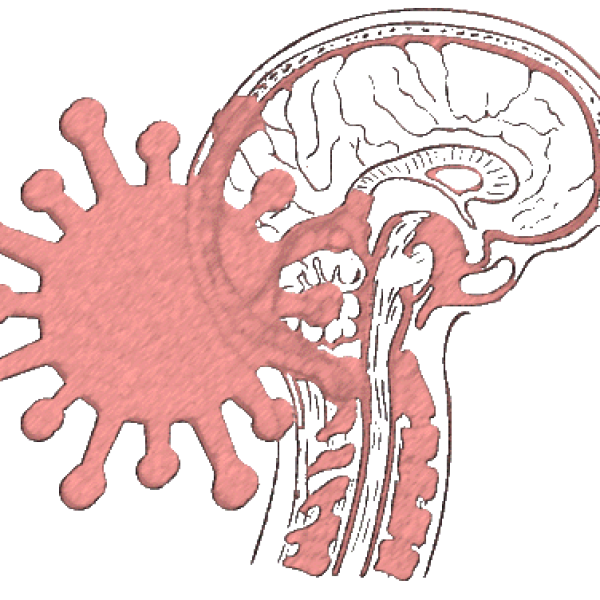Identifying Neuro-COVID-19 Biomarker
Patients developing neurological disorders post-COVID-19 have been reported in high numbers as researchers are struggeling to identify the cause.
Neuro-Consequences of SARS-Cov‑2 infection
Complications of the respiratory system are the most frequent and also most fatal consequences of SARS-CoV2 infection and have thus been a treatment focus. However, evidence is amassing that involvement of the central and peripheral nervous system may be more widespread than previously assumed. Encephaolpathy, meningoencephalitis, ischaemic stroke and Guillain-Barré syndrome are just a few of the observed pathologies in COVID-19 patients. A recent press release of the German Neurology Foundation (DGN) states that 87% of these patients have persistent symptoms(Pressemitteilung 2020).
Improving identification and classification of affected patient groups is becoming an increasingly pressing issue (Fotuhi et al. 2020). Furthermore, patients with COVID-19 neurological impairments will require specialized, ongoing treatment with frequent follow-ups (Carfi, Bernabei, and Landi 2020).

Covid-19 Neurological Biomarker Investigation
However, currently our means of identifying risk-groups for are insufficient and the etiologies of these neurological symptoms remain largely unknown. The identification of biomarkers associated with specific disease outcomes would be invaluable. The predictive power of these could drive patient-tailored treatments. In order to widen research approaches, protein arrays can be utilized to screen for potential biomarkers, monitor treatment or examine disease-relevant protein-protein interactions.
A study investigating the interactome of SARS-CoV2 by investigating the protein interaction could identify 332 high-confidence protein–protein interactions between SARS-CoV‑2 and human proteins. The identified proteins play a role in various biological processes, including protein trafficking, translation, transcription and regulation of ubiquitination (Gordon et al. 2020).
Special antibodies against nerve cells in SARS-CoV‑2 patients.
SARS-CoV‑2 mediated autoimmune processes lead to Neuro-Covid. A research group around Prof. Dr. Harald Prüß from Charité Berlin, Germany, was able to detect special autoantibodies against nerve cells in 11 intensive care patients with COVID-19 and neurological symptoms (Franke et al. 2020).
Biomarker Discovery with engine Protein Arrays
The success of the approach indicates that protein array screenings may lead to further insight into SARS-CoV2. engine protein arrays are a powerful tool for high throughput, multiplexed protein analysis to discover biomarkers of neurological disorders. Screen over 10.000 interactions in one experiment. Protein arrays could be used to:
- determine communalities in antibody profiles of similar patient groups
- compare different matrices (CSF, blood, lymph,etc.)
- monitor treatment success
- enable simple, long-term patient profiling
References
- Pressemitteilung, E. idw-Informationsdienst Wissenschaft idw-Informationsdienst Wissenschaft Neuro-COVID: Es können nicht nur neurologische Begleitsymptome, sondern auch neurologische Folgeerkrankungen auftreten Seite 1. (2020) https://dgn.org/presse/pressemitteilungen/neuro-covid-es-koennen-nicht-nur-neurologische-begleitsymptome-sondern-auch-neurologische-folgeerkrankungen-auftreten/
- Fotuhi, M., Mian, A., Meysami, S. & Raji, C. A. Neurobiology of COVID-19. Journal of Alzheimer’s Disease vol. 76 3–19 (2020) DOI: 10.3233/JAD-200581
- Paterson, R. W. et al. The emerging spectrum of COVID-19 neurology: clinical, radiological and laboratory findings. Brain 143, 3104–3120 (2020) DOI: 10.1093/brain/awaa240
- Carfì, A., Bernabei, R. & Landi, F. Persistent Symptoms in Patients after Acute COVID-19. JAMA — Journal of the American Medical Association vol. 324 603–605 (2020) DOI: 10.1001/jama.2020.12603
- Franke, C. et al. High frequency of cerebrospinal fluid autoantibodies in COVID-19 patients with neurological symptoms. medRxiv 2020.07.01.20143214; DOI: 10.1101/2020.07.01.20143214
